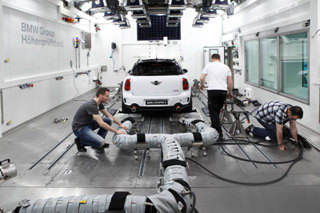Up to 90% of new cars could already meet the stringent Real Driving Emissions (RDE) NOx limits set out by the European Commission, according to Emissions Analytics.
The regulations require vehicles to emit a maximum of 80mg/km of NOx in order to achieve RDE compliance, which comes into force in September 2019.
Emissions Analytics says that up to 90% of the vehicles would still be compliant based on a sample of 30 RDE-certified diesel cars it tested on its independent EQUA Index test.
In a statement the company said: “Although the test does not include cold start in its ratings, overall it remains a good proxy for RDE compliance. Furthermore, the average NOx on a combined cycle of these still-compliant vehicles is just 50 mg/km, well below the certification standard.”
The findings suggest the impact of removing the conformity factors would be low.
The Court verdict suggests that vehicles already certified under Real Driving Emissions (that starts with the stage known as “Euro 6d-temp”) will remain compliant, as will vehicles certified for up to 14 further months in the future, depending on whether the Commission appeals and the speed with which replacement legislation is brought forward.
A proportion of pre-RDE Euro 6 diesels from a range of manufacturer groups already achieved the 80mg/km limit during Emission Analytics’ testing.
VW Group achieved the best performance, with 43% of vehicles tested surpassing the limit. BMW/Mini also performed well, with 33% of its models found to be below the limit.
“The annulment of these Conformity Factors further confuses what Euro 6 means as a label of performance. RDE was meant to be a discontinuity with the past, failed regulation. It had two levels already – two Conformity Factors – but the effect of the Court judgement could lead a change in the gradations or, potentially, more gradations. The Euro 6 label has limited informational content already, but the effect may be to cloud what RDE means, causing further consumer confusion, which would not be to the advantage of the car market.” Added Emissions Analytics.
The Court judgement is witness to the growing power of cities in determining vehicle emissions policy, even if they sometimes demonstrate an unresolved tension between whether air quality improvement or greenhouse gas emissions reduction is the higher priority. What the Court judgement may do is bring into starker relief the difference between the best and worst performing vehicles, which would pave the way for more efficient solutions to the urban air quality challenge.




















Login to comment
Comments
No comments have been made yet.